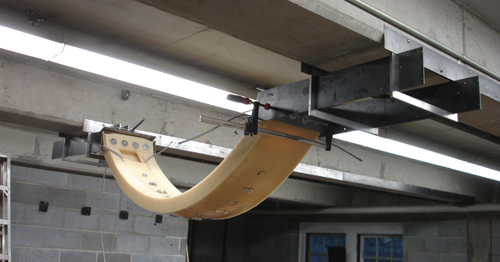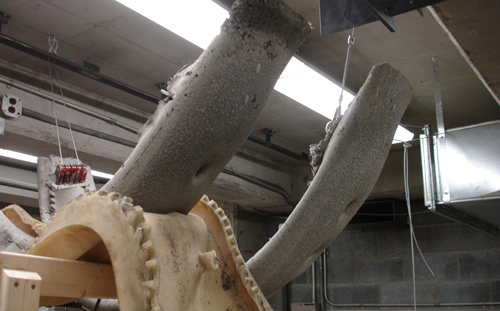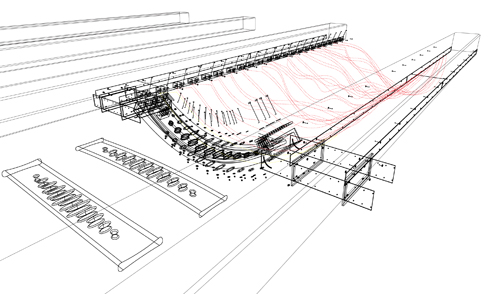James Brucz

Elastic Catenaries explores the use of flexible rubber molds to produce selfsimilar concrete casts that are inherently structural. The mold’s elasticity becomes a means for synthesizing structure and other performative effects like light transmission and formal expression. A soft rubber reconfigurable mold (RCM-C) is hung from two points. When concrete is added to the mold it deforms in direct relation to the additional weight. The mold is able to take on a variety of geometries including catenaries, parabolas or other conic sections. In this way it negotiates structural form (geometry) in direct response to the material’s properties (weight). The mold also provides the means to fabricate larger assemblies of self-similar parts as a sequence of iterative suspended casts.
The full scale RCM-C and its resultant concrete components display a hybrid relationship that can be likened to that of a parent to child. Sibling phenotypic similarities, the result of inheritance, are passed on from the parent to the child. The RCM-C, as parent, literally gives birth to many concrete siblings, all of which are unique but similar. These are poured sequentially, with the previous becoming a formal input for the subsequent. By reusing the same mold to produce one concrete sibling after another, one can understand the assembly as a self-organizing system where the whole becomes an expression of an iterative computation. In such a system, both concrete’s and rubber’s mutability is exploited to yield a considerable amount of formal variety. At the same time there is control in the system such that certain geometric constraints can be exercised to create more precision for other performative criteria, like lighting, to be incorporated into the individual components. In the end, the agency of both materials is registered in the final construction.




